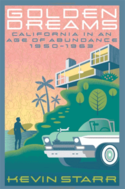Toronto is a nice city.
If that seems like faint praise, then so be it; I'm not a great Toronto fan. Don't get me wrong. It is a wonderful city for the tourist, and temporary residents I know swear by the place. But it's not my kind of town.
I spent much time in Toronto in the 1980s and 90s. My first visit must have been in 1970 or so, and I was last there on a very cold, January day in 2003. read more »






















